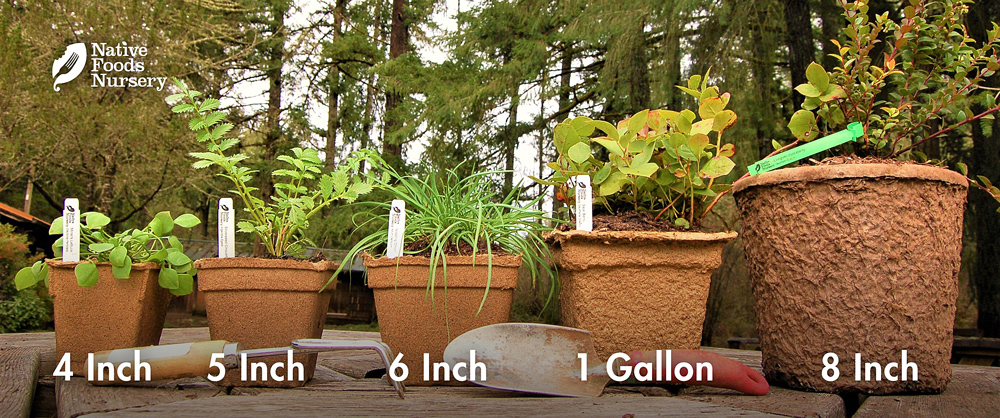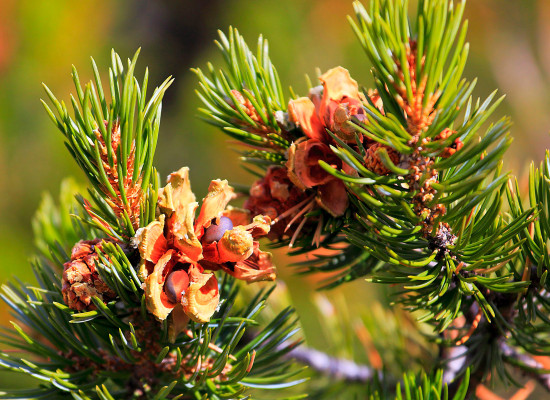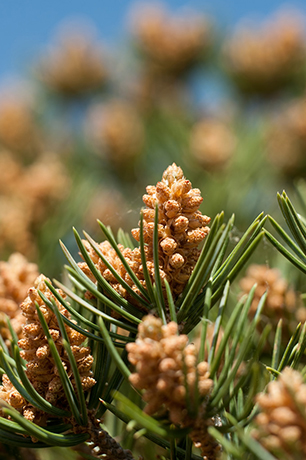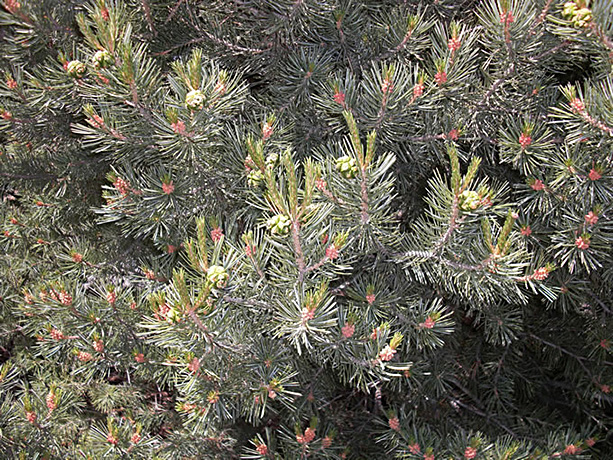Pinyon Pine
- Current Stock:
- 0
- Other Names:
- Colorado Pinyon, Two-needle Pinyon, Piñon, Single-leaf Pinyon, Pinyon Pine
- Latin Name:
- Pinus edulis & monophylla
Pinyon Pines are majestic, evergreen trees that grow delicious and nutritious pine nuts - and they live for up to 1000 years! We sell two different species with very similar qualities - Pinus monophylla and Pinus edulis.
***NOTE: Our 4" Pinus monophylla are from seed sown in 2022. They are only 2-3 inches tall.
Edible Uses
Pinyon Pine cones contain edible pine nuts that are highly valued for their culinary and nutritional qualities (they are a primary ingredient in making pesto). Their flavor is buttery, mild and sweet - some say with slight notes of citrus. They are especially rich in mono-unsaturated fatty acids that helps to lower LDL or "bad cholesterol" and increases HDL or "good-cholesterol" in the blood. Additionally, they contain numerous health promoting phyto-chemicals, vitamins, antioxidants, and minerals.
Native American peoples, wild foragers, and sustainable gardeners have and continue to value this tree as a special food source - whether eaten raw or roasted, or made into pestos, cookies, or other confections. Most of the pine nuts sold commercially today are now sourced from Asia, and are said to be of much lower quality than our native nuts - make sure to buy local! Foreign nuts may even be the source of mysterious condition known as Pine Mouth, where people report other foods to taste bitter after eating the nuts.
Pinus monophylla nuts tend to be slightly larger and softer - making them easier to crack by hand. However some prefer the taste of Pinus edulis, which is often roasted in shell like a sunflower seed.
Ornamental Qualities
The Pinyon Pine is a beautiful, densely foliaged small pine that is especially well suited for rock gardens and xeriscaping. They are bushy and symmetrical when young, maturing into a spreading tree with a rounded or flat crown. They have attractive needled foliage, one to two inches long, usually curved. Pinus edulis has a deeper green colored needle, whereas Pinus monophylla has a delicate blue-grey coloration. The color and soft texture, along with exceptional drought hardiness, make the Pinyon Pine a highly desirable addition to ornamental gardens.
Environment and Culture
The Pinyon Pine is a native food of the Southwest, and has a wide range from Texas through California. Their seeds are extensively collected by Native American tribes and wildcrafters. They will grow well with both Oregon White Oak and California Black Oak. They will also benefit from a companion planting with either the Red Stem Ceanothus or the Blue Blossom Ceanothus. The large cones will attract chipmunks, squirrels and Jays who all favor the nuts and promote the establishment of new stands.
In the last 100 years, Pinyon Pine has been tragically diminished by removal of native peoples, misguided policy and corporate interests, and extensive urban development through the range. Between 1950 and 1973, over 3 million acres were cut or burned. This plant is an incredible food source, one of the few remaining commercially viable wild foods that can provide nutrient-dense foods for millions. It is VERY important plant to restore.
Northwest Native American tribes today still value this special tree as food, medicine, and family. Despite great cultural losses, they continue to work towards stewarding and restoring wild populations, both strengthening the integrity of the ecology and sustaining their cultural heritage and wisdom. These strong and recovering peoples and plants deserve our respect, gratitude, and reparations. (Learn more & how to help on our Charitable Giving page.)
Harvest, Care, and Preparation
The Pinyon Pine is very slow growing and in most conditions will need almost no attention. Light pruning to direct growth and water during establishment may be necessary, after establishment they rarely need attention as they are extremely drought tolerant. However they will not grow well in heavy, saturated soils. Unlike the California Foothill Pine, the Pinyon cones do not readily drop their seeds, thus it is necessary to use a pole to knock down the large cones after they ripen. The nuts can be eaten raw or cooked and pair well with both sweet and savory dishes. A light toasting helps to bring out their flavor.
Native Range:
Edulis: CA, CO, AZ, NM, WY, UT, TX, OK
Monophylla: CA, NV, UT, AR, NM
USDA zones: 1-11
Ease of Care: Easy
Deer Resistance: High
Light Requirements: Full Sun
Soil Type: Light to Medium, especially prefers rocky, well drained soils
Water Requirements: Low, the most drought tolerant of all the pines.
Pollination: Self-Fertile
Bearing Age: 25 years
Size at Maturity: 15-60 Feet
Plant Spacing: 10-20 Feet
Bloom Time: Feb-Mar
Harvest Time: Sept-Oct
Pot Sizing Guide

Our policy lasts 30 days. If 30 days have gone by since your purchase, unfortunately we can’t offer you a refund or exchange. To be eligible for a return, your item must be unused and in the same condition that you received it. It must also be in the original packaging. Gift cards are non-refundable. Refunds (if applicable) Once your return is received and inspected, we will send you an email to notify you that we have received your returned item. We will also notify you of the approval or rejection of your refund. If you are approved, then your refund will be processed, and a credit will automatically be applied to your credit card or original method of payment, within a certain amount of days.














